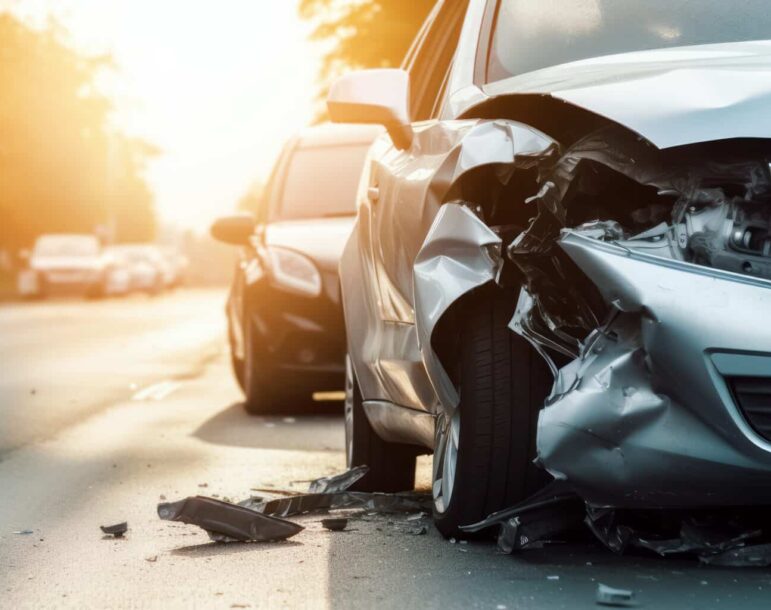Car accidents in Houston are an unfortunate reality of modern life, and when they occur, one of the crucial aspects that demand attention is determining fault. Assigning responsibility is pivotal not only for insurance claims but also for legal proceedings. In this blog post, we’ll explore the various factors involved in determining fault in car accidents and how this process unfolds.
Understanding Comparative Negligence
Most jurisdictions follow the principle of comparative negligence, meaning that fault can be shared among multiple parties involved in an accident. The degree of fault assigned to each party affects their eligibility for compensation. For instance, if a driver is found 30% at fault, they may be entitled to 70% of the damages.
There are different types of comparative negligence:
- Pure Comparative Negligence: Fault is divided exactly according to each party’s contribution to the accident. Even if you are 99% at fault, you can still recover 1% of your damages.
- Modified Comparative Negligence (50% Bar Rule): You can only recover damages if you are less than 50% at fault.
- Modified Comparative Negligence (51% Bar Rule): Recovery is allowed if your fault is 50% or less, but if you are 51% or more at fault, you cannot recover any damages.
Some states also follow the Contributory Negligence rule, which bars any recovery if you are found even 1% at fault. Knowing your state’s negligence law is essential as it directly impacts your claim.
What Are Fault and No-Fault States?
Fault and no-fault states handle car accidents differently. Fault states require the at-fault driver (or their insurance) to cover the damages. The process involves determining who was responsible and to what extent.
In contrast, no-fault states simplify the claims process by allowing each driver’s policy to cover their losses, regardless of who caused the accident. This approach often reduces litigation but limits the ability to sue unless the injuries are severe.
What is a No-Fault Car Accident?
In a no-fault car accident, each driver’s insurance covers their own damages, no matter who caused the crash. This system makes the claims process easier since you don’t need to prove fault to get compensation for basic damages like medical bills or vehicle repairs. However, it comes with limitations—you usually can’t sue the other driver unless your injuries are severe. Understanding the distinction between fault and no-fault systems helps drivers navigate insurance claims more smoothly and sets realistic expectations about compensation.
Factors Considered in Determining Fault
Traffic Laws and Regulations
Violations of traffic laws often play a significant role in assigning fault. This can include running red lights, failure to yield, speeding, or reckless driving.
Police Reports
Law enforcement officers who respond to the scene create accident reports. These reports contain details of the incident, eyewitness accounts, and the officer’s assessment of fault. While not conclusive, they can strongly influence the claims process.
Eyewitness Testimonies
Statements from impartial witnesses can provide valuable insights into the events leading up to the accident. Eyewitness accounts can help corroborate or challenge the involved parties’ versions of the incident.
Photographic Evidence
In the age of smartphones, photographic evidence has become increasingly prevalent. Photos of the accident scene, vehicle damage, and road conditions can offer objective documentation that aids in determining fault.
Traffic Camera Footage
In some cases, traffic cameras may capture the accident. This footage can be a crucial piece of evidence, providing an unbiased record of the events leading to the collision.
Expert Opinions
They may call upon accident reconstruction experts to analyze the scene, vehicle damage, and other evidence. Their expert opinions can help establish the sequence of events and assign fault based on their findings.
Driver Statements
They can consider statements made by the involved parties immediately after the accident. However, it’s essential to note that admissions of fault at the scene do not necessarily determine legal liability.
When Fault Cannot Be Determined: What to Do Next?
Sometimes, fault determination is complex, especially when evidence is unclear or both drivers may share the blame. If the fault cannot be determined:
- Gather more evidence: Return to the scene, look for additional witnesses, or seek out any available security camera footage.
- Consult an accident reconstruction expert: Professionals can provide a detailed analysis based on available evidence, helping clarify the sequence of events.
- File a claim with your insurer: Even if the fault is unclear, your insurance company can begin the claims process and work towards resolution.
Legal Implications
Once fault is determined, it has legal implications for insurance claims and potential lawsuits. The at-fault party may be responsible for covering the damages, including medical expenses, property damage, and other losses suffered by the innocent party.
FAQs
How is fault determined in a car accident in Texas?
In Texas, a system called comparative negligence determines fault in a car accident.
Can I still receive compensation if I am partially at fault?
Yes, in states that follow comparative negligence, you can still receive compensation, but your percentage of fault will reduce it. For example, if you are found 20% at fault, you may recover 80% of your damages.
What should I do immediately after an accident to help determine fault?
Document the scene with photos, gather contact information from witnesses, obtain a police report, and avoid admitting fault at the scene. Reach out to a lawyer if you need help with the claims process.
Does fault affect my insurance rates?
Yes, being found at fault in an accident can lead to higher insurance premiums. The degree of fault and the severity of the accident will influence how much your rates may increase.
Conclusion
Determining fault in car accidents is a nuanced process that involves a thorough examination of various factors. It’s essential for individuals involved in accidents to gather as much evidence as possible, including contact information for witnesses and photographic documentation. Seeking legal advice can also be crucial in navigating the complexities of insurance claims and legal proceedings following a car accident. Understanding the process of determining fault empowers individuals to advocate for their rights and ensures a fair resolution to the aftermath of a collision.
Contact a Local Lawyer
If you were injured due to someone else’s negligence, contact our personal injury attorneys. Contact us today to schedule your free consultation and discuss your legal rights. We, Houston car accident attorneys care and we can help.
Get in touch with us so we can evaluate your case for free. Call PMR Law at 832-844-6428 and a member of our team will get in touch with you immediately.
PMR Law is considered one of the Best Law Firms in America, by Rue Ratings. Several of our attorneys have been given the honor of being named Super Lawyers by Thomson Reuters. The American Institute of Personal Injury Attorneys has named our attorneys 10 Best in Client Satisfaction. Speaking of personal injury, Attorney and Practice Magazine awarded our attorneys with Top 10 Personal Injury Attorney distinctions. The National Trial Lawyers have named three of our attorneys as Top 100 attorneys.
The Academy of Attorneys has named two of our attorneys as Top 40 Under 40. Our PMR attorneys have been recognized as Best Attorneys of America, by Rue Ratings. PMR Law is a proud member of the Multi-Million Dollar Advocate Forum. Houstonia Magazine has named two of our attorneys as Top Lawyers in Personal Injury. Forbes Advisor has recognized PMR Law attorneys in their Best Truck Accident Lawyers of Houston. Texas Lawyer magazine has named PMR Law as the #1 Personal Injury Law Firm in Houston.

